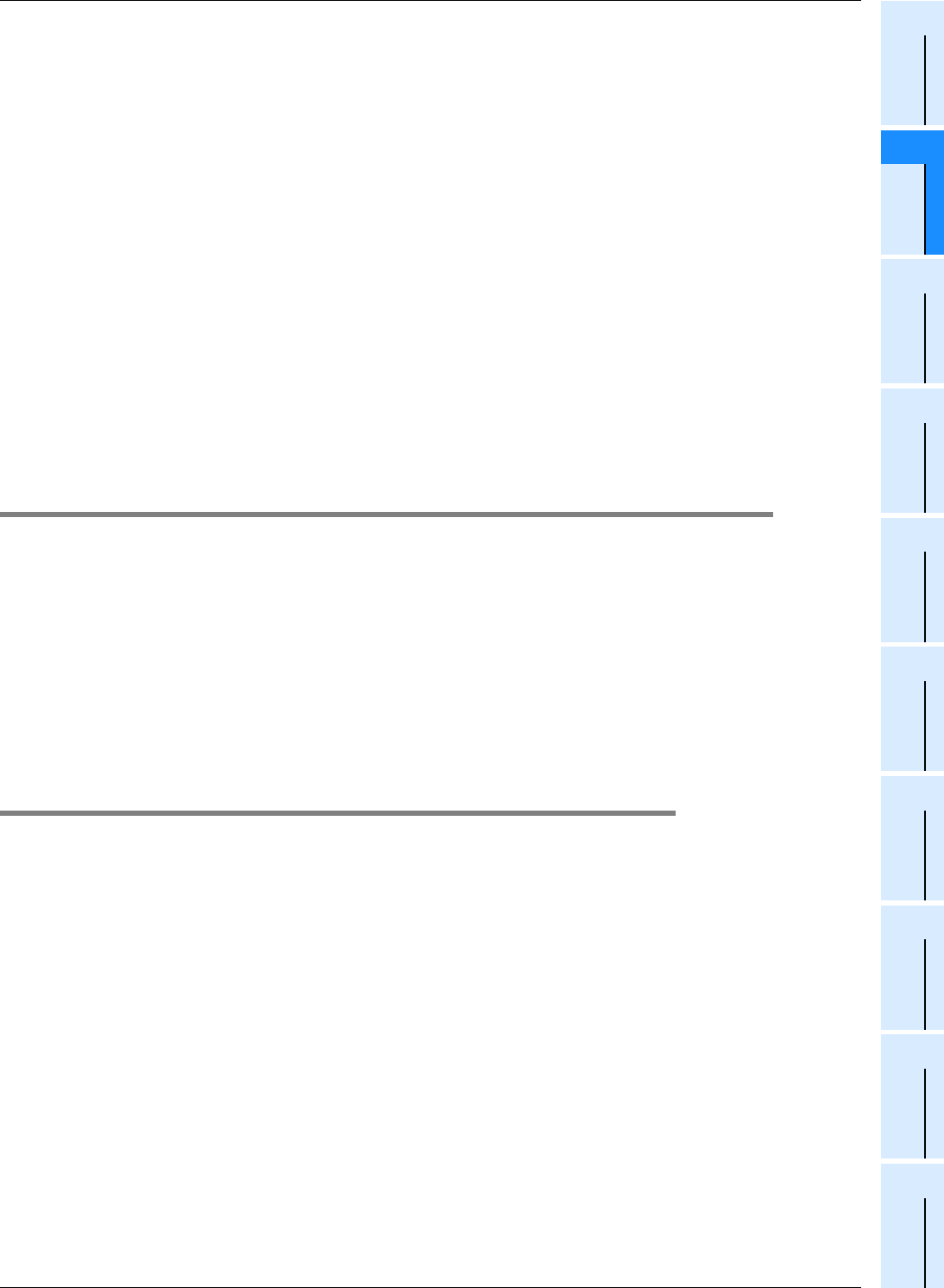
27
FX3S/FX3G/FX3GC/FX3U/FX3UC Series
Programming Manual - Basic & Applied Instruction Edition
2 Overview (Sequence Program)
2.2 Introduction of Applied Instructions
1
Introduction
2
Overview
3
Instruction
List
4
Devices
in Detail
5
Specified the
Device &
Constant
6
Before
Programming
7
Basic
Instruction
8
FNC00-FNC09
Program Flow
9
FNC10-FNC19
Move & Compare
10
FNC20-FNC29
Arith. & Logic
Operation
4. Registration of "entry code" for protecting programs
The entry code can be registered to prevent erroneous read/incorrect write protection of created sequence programs.
With regard to online operations from GX Works2, GX Developer (Ver. 8.24A or later) and handy programming panels,
the program protection level can be set by the entry code specification method. In this case, such specification that
"changes of a program are disabled, but monitoring and changes of present values are enabled" is available.
→ Refer to the manual of the used programming tool.
5. Addition of "comments" for a sequence program
By setting parameters, the device comment area (where Katakana, Kanji and alphanumeric characters are available)
can be secured in the program memory.
→ Refer to the manual of the used programming tool.
6. Writing programs in the RUN mode
Programs can be changed while the PLC is operating (RUN mode).
By this function, programs can be adjusted and changed efficiently without stopping the machine.
→ Refer to the manual of the used programming tool.
7. Symbolic information storage
The FX3U/FX3UC PLCs Ver. 3.00 or later can store symbolic information (data indicating the program configuration
such as structure and labels).
By using this function, you can read the symbolic information from the PLC, and edit labels, function blocks, etc.
GX Works2 Ver. 1.62Q or later is required to store symbolic information.
→ Refer to the GX Works2 Version 1 Operating Manual (Common) for the details on symbolic information.
2.2 Introduction of Applied Instructions
1. Excellent fundamental performance
FX3S/FX3G/FX3GC/FX3U/FX3UC PLCs are equipped with not only fundamental applied functions for data transfer, data
comparison, arithmetic operations, logical operations, data rotation, and data shift but also high-speed processing
instructions for I/O refresh, interrupt, comparison dedicated to high-speed counters, and high-speed pulse output as
well as initial state instructions by which standard operations for machine control are made into packages in the SFC
control. In this way, FX
3S/FX3G/FX3GC/FX3U/FX3UC PLCs have the specifications offering fundamental functions, high-
speed processing, and good operability.
2. Advanced control easily available
In addition, FX PLCs offer many handy instructions by which complicated sequence control is made into packages to
mitigate the load for creating sequence programs and save the number of I/O points.
FX PLCs also offer floating point arithmetic operations and PID operations to cope with more advanced control.
2.2.1 Major applied instructions
This subsection introduces representative ones among many applied instructions.
1. Program flow
• Conditional jump (CJ/FNC 00)
• Call subroutine (CALL/FNC 01)
• Enable interrupt (EI/FNC 04)
• Disable interrupt (DI/FNC 05)
• Start a FOR/NEXT loop (FOR/FNC 08)
→ Refer to Chapter 8.
2. Move and compare
• Compare (CMP/FNC 10)
• Data comparison (FNC224 to FNC246)
• Floating point compare
(ECMP/FNC110 and EZCP/FNC111)
• Zone compare (ZCP/FNC 11)
• High-speed counter compare (FNC 53 to FNC 55)
• High-speed counter compare with data table
(HSCT/FNC280)
• Move (MOV/FNC 12)
• Floating point move (EMOV/FNC112)
• High-speed counter move (HCMOV/FNC189)
• Conversion to binary-coded decimal
(BCD/FNC 18)
• Conversion to binary (BIN/FNC 19)
• Decimal to gray code conversion (FNC170) and
gray code to decimal conversion (FNC171)
→ Refer to Chapter 9, Chapter 13, Chapter 18,
Chapter 22, Chapter 24, Chapter 28 and
Chapter 32.


















